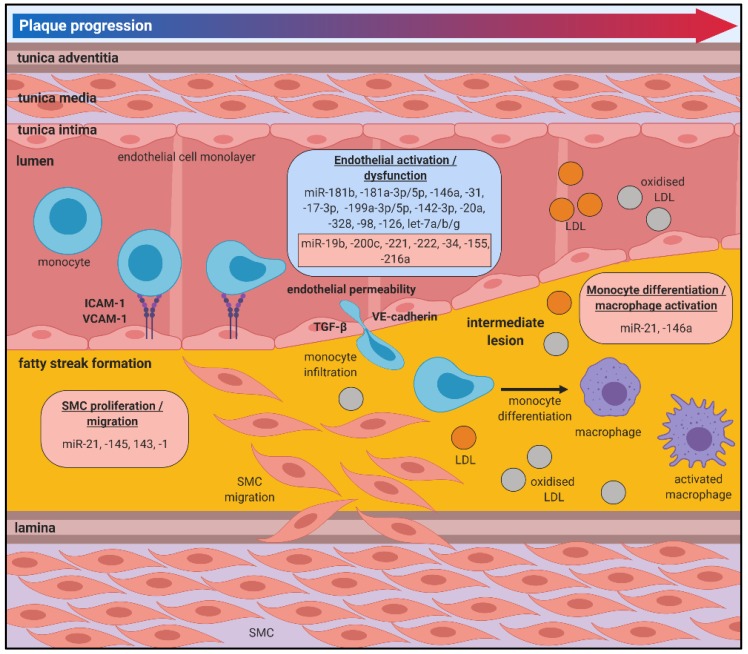Figure 2.
miRNAs in atherosclerotic plaque initiation and progression. Damage to the endothelial lining of lesion-prone areas of the arterial vasculature is one of the earliest events that contributes to the pathobiology of atherosclerosis, promoting a pro-inflammatory milieu and inducing an oxidative stress environment, which facilitates the recruitment of monocytes to the vessel wall via the increased expression of cell adhesion molecules (CAMs) including ICAM-1 and VCAM-1. Monocytes undergo trans-endothelial migration into the intima, where they undergo differentiation into macrophages and become activated under inflammatory and oxidative stress conditions. LDL diffuses into the intima and undergoes oxidative modification, and is likely to be taken up by the macrophages. Atherosclerotic lesion progression involves the proliferation and migration of smooth muscle cells (SMCs) into the intima. Positive/atheroprotective (blue) or negative/atherogenic (red) effects of miRNAs on the atherosclerotic processes are shown.

